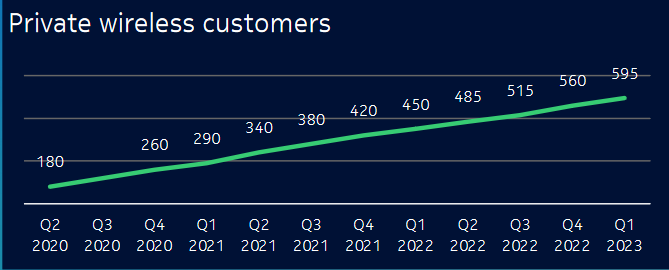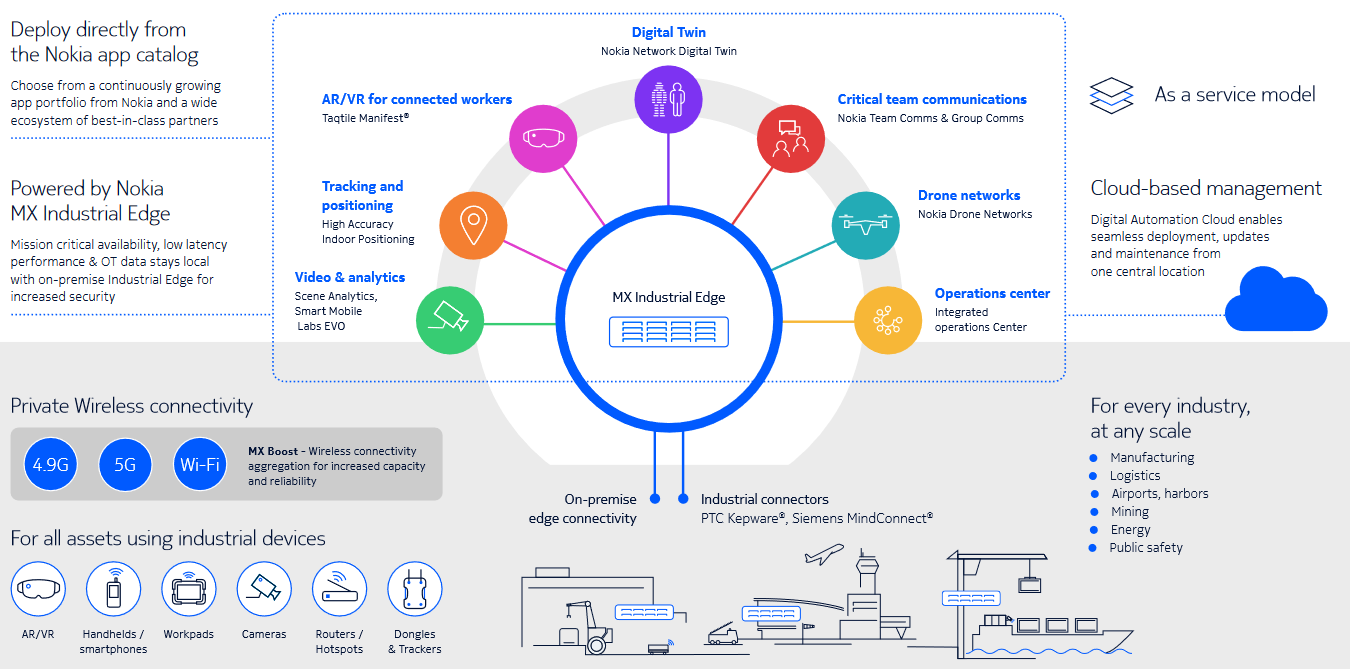Private wireless networks are growing in popularity and its stands out in Nokia's Q1 2023 earnings.
Nokia sets up private wireless networks as a fairly plug-and-play set of modular hardware and software components that let users spin up both 4G and 5G private networks, often to support industrial capabilities.
Nokia’s Q1 2023 earnings report shows its number of private wireless network customer base continuing to grow solidly. The company now has 595 enterprise customers for the segment, who are powering 1,500+ mission-critical private networks across airports, logistics companies, manufacturing, mines, ports, and utilities.
The Finnish company reported mixed earnings on April 20, its first since a major brand overhaul that aimed to position it, in CEO Pekka Lundmark words, as “a B2B technology innovation leader unleashing the exponential potential of networks” and says it is targeting full-year revenues for 2023 of €24.6 billion to €26.2 billion.
See also: AWS’s Private 5G is GA, but it ain’t 5G

Nokia reports its earnings across four key segments: network infrastructure, mobile networks, cloud and network services, and “Nokia technologies.”
Network infrastructure had a particularly strong quarter with 13% growth, after launching its new optical networking platform PSE-6s and AirScale Habrok, its latest 5G massive MIMO radio powered by a new generation of the ReefShark chipsets it developed with semiconductor company Marvell. (The new radios are 36% more energy efficient, Nokia says, cutting electricity costs.)
CEO Lundvark warned: “We are starting to see some signs of the economic environment impacting customer spending. Given the ongoing need to invest in 5G and fiber, we see this primarily as a question of timing; nevertheless we will maintain our cost discipline to ensure we can successfully navigate this uncertainty.”
Private network growth, however modest the customer base, stood out, however.

Nokia (like others in the space) provides dedicated cell sites and core network servers for its private wireless network customers, along with a suite of associated SaaS services to free customers up from the limits of public cellular networks (screenshot from its catalogue for illustration, above). These are often in sensitive or remote locations, but also increasingly used to support automation processes/the IoT with improved performance and privacy, now that private 5G networks offer such compelling bandwidth and capabilities.
The company notes that "while there is growing demand for 5G industrial devices able to access private wireless networks, there are more than 6,800 LTE 1 enabled non-phone devices and many industrial systems with built-in 4.9G/LTE modems; 85% of industrial use cases can already be supported by 4.9G/LTE.









